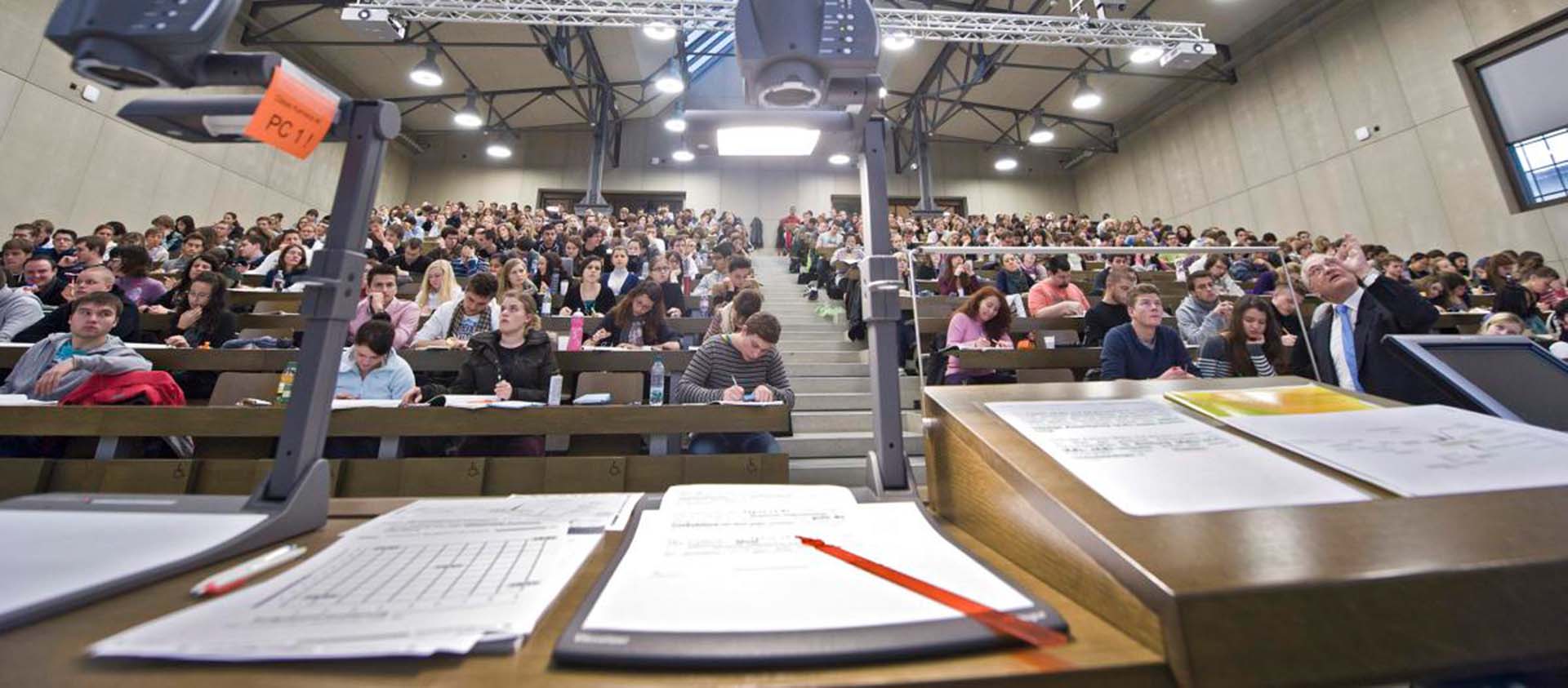
“The goal was to consolidate the experience gained with digital teaching and effectively combine it with in-person teaching.”
Executive Board
Lessons in teaching
The pandemic also had an impact on our teaching in 2021. While the 19,441 students of the University of Bern are back on site, they still continue to benefit from experiences gained during remote teaching. The University is promoting efforts to integrate digital tools for modern in-person teaching.
By Prof. Dr. Fritz Sager, Vice-Rector for Teaching
A total of 19,441 students were registered at the University of Bern in the 2021 fall semester. Of these, 8,168 were enrolled in a bachelor's degree program, 4,681 in a master's degree program, 3,315 were doctoral students and 2,098 participated in a continuing education program with at least 60 ECTS (1,899 of which at the master’s level [MAS]). Added to that are 1,179 continuing education students at the certificate and diploma levels (CAS and DAS). According to information published by the Federal Statistical Office, the University of Bern has 18,251 students (excluding CAS and DAS programs as well as 11 double registrations).
Back to the lecture halls
Teaching largely returned to an in-person format in 2021 and the fall semester even finished up that way, which was greatly appreciated by an overwhelming majority of students and faculty. In-person teaching was only possible through the adoption of strict hygiene measures. The fact that these measures werelargely accepted and adhered to not only demonstrates a great sense of responsibility, but also the clear desire of students and teachers alike to enable social interactions on site. The University’s teaching is not limited to the content taught, but also encompasses encounters between like minds in situations linked to the actual courses, whether as students arrive, during breaks or during discussions about the material being taught.
Ensuring digitalization and innovation and taking them to the next level
The University was eager to make this kind of personal interaction possible again for its students. Yet the return to in-person teaching didn’t mean that the enormous learning process that had taken place a year earlier as the University switched to digital teaching would simply be forgotten. On the contrary: The goal was to consolidate the experience gained with digital teaching and effectively combine it with in-person teaching. As a result, students had digital access to the content of all courses for their follow-up work. The University of Bern continued to promote ongoing projects in the area of teaching innovation and was able to position itself as a pioneer of modern university teaching, both throughout Switzerland and internationally, through initiatives such as eCoaches, which help lecturers design their courses to be more contemporary. The Promotion of Innovative Teaching (FIL) program entered its tenth tender round in 2021 and continues to promote new approaches in university teaching. The University offers Online Self-Assessments (OSA) to prospective students to give them a chance to see just how closely their dream course of study actually corresponds to their expectations, thereby smoothing out their transition from high school to university. The “Focus on Mathematics” project helps students fill gaps in their first year of study with the help of a digital, adaptive self-learning tool that supplements classroom instruction. As a point of contact for bottom-up ideas from the teaching staff, the “Teaching Innovation Group” is now available in the Vice-Rectorate Teaching; this group gathers trends in and tools used for digital teaching and examines their suitability for the University of Bern.
Not least, the University of Bern’s strong commitment to digitalization and education was reflected in its founding of the BeLEARN Association on October 27, 2021. BeLEARN is the joint center of excellence for digitalization in education of Bern’s three universities and was established in collaboration with ETH Lausanne and the Swiss Federal University for Vocational Education and Training. Since January 1, 2022, BeLEARN has been working to develop solutions for tomorrow’s teaching within the scope of cross-university, interdisciplinary projects in the areas of digital skills, digital tools and data science for education.
Skills for the digital future
Digitalization will continue to be pursued in the interest of teaching. With its project entitled “Skills for a (Digital) Future”, the Vice-Rectorate Teaching is developing a didactically prepared online offer that teaches students from a wide range of disciplines – from ethics to programming – how to deal with digitalization. The “e-assessment” project, which is being promoted as part of the ILIAS teaching platform at the University of Bern, is all about enabling students to take their tests online. As a member of The Guild, the University of Bern will also intensify its international involvement through the European Education Area (EEA) and in the Digital. Education Action Plan (DEAP).
A teaching university like the University of Bern only works thanks to the commitment of everybody involved. That holds particularly true in challenging times like these. Because of that, each and every student, lecturer and employee deserves our respect and a huge “thank you”.
Trend in number of students by faculty
The individual parameters can be selected or deselected by clicking on the legend.
